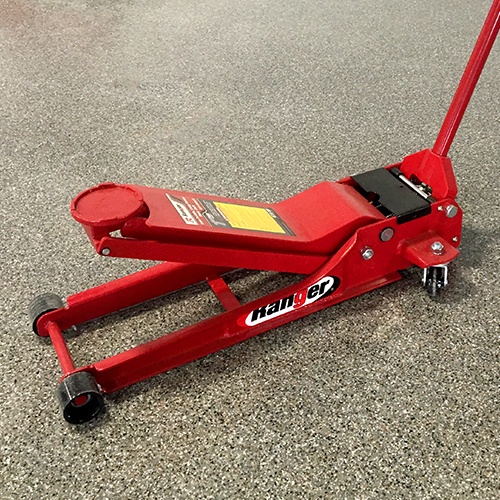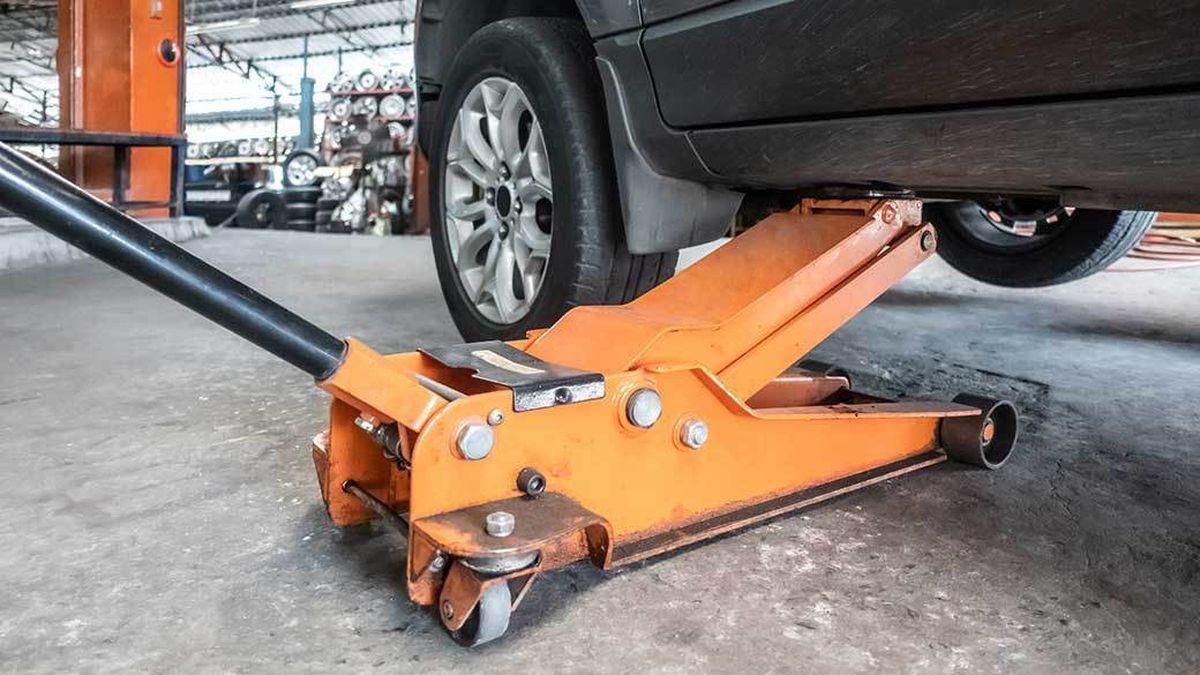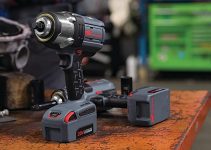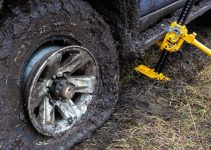You’re just about to lift your car when you realize that your floor jack simply won’t hold pressure? Of course, using it in such a condition is out of the question; it’s simply too risky. Doing so would significantly increase the risk of damaging your vehicle or, even worse, harm yourself.
With that being said, you still need to raise your car to fix it right? So what can you do with a floor jack that won’t hold pressure?
First of all, take a deep breath, and calm down. In most cases, the solution is quite simple. Here are the steps you should follow:
- Inspect the lifting capacity;
- Check the hydraulic fluid level;
- Bleed the system;
- Inspect the release valve;
- Perform overall inspection once again.
Table of Contents
Inspect the Lifting Capacity
First of all, you need to know that each jack has a limited lifting capacity. You cannot go beyond it and try to lift something that exceeds the device’s potential.
The first thing to do when faced with a jack that won’t lift whatever you are trying to lift is to check its capacity.
In most cases, trying to lift a vehicle exceeding the capacity of your jack will cause the same symptoms as a jack that can’t hold pressure. The jack will start to rise until it reaches the vehicle’s body and it might even lift it a little. But when reaching the point where the wheel would leave the ground, two things may happen: the jack will stop lifting or it will slightly lift the wheel off the ground but will go back down as soon as you stop pumping.
Keeping on pumping the jack may cause internal leaks and damages to the seals, ultimately preventing the jacks from holding any amount of pressure.
So, before you try to lift any vehicle, compare the nominal capacity of your jack against the weight of the vehicle.
This is one of the most straightforward fixes, as the solution is quite obvious – simply don’t expect your jack to do the impossible.

Photo credit: bendpak.com
Check the Hydraulic Fluid Level
Be it a lower or higher fluid level, both extremes are bound to cause problems, as your lifting device won’t function properly.
The fluid level should always be within the recommended threshold, neither more nor less than what’s needed.
When operating a jack with a higher fluid level than normal, the higher than recommended pressure risk blowing out seals, causing internal leaks and resulting in a jack that won’t hold pressure.
On the other hand, a jack with a low fluid level will usually work fine, but the maximum height will be significantly lower. The real concern here is finding why the fluid level actually decreased. Hydraulic systems work in a closed-loop, meaning that the fluid level should never go down. If it does, there’s probably a leak somewhere and you’ll need to fix it before you can use your jack.
How to check the fluid level on a jack
Checking the fluid level on a jack is quite simple. Simply take off the fill plug and check the chamber for the oil level.
Different jacks may work differently so make sure to check the specs in the owner’s manual. Of course, it’s not uncommon for jack owners to have lost or trashed the instructions after purchase. Luckily, there are many websites offering jack repair manuals out there.
When it comes to oil selection, be aware that different jacks may use different hydraulic fluid. Once again, make sure to check in your jack’s owner manual the required fluid type and viscosity.
Moreover, lubrication prevents corrosion and potential future breakdown, which is another reason why you should pay attention to the products you buy.
Also, always remember to never use compressor oil for jacks. Compressor oil, just like engine oil, for example, doesn’t have the required additives and may cause seals to leak prematurely. If you really are in trouble and absolutely need to find a quick fix, you can always use automatic transmission fluid to re-fill your jack and finish the job. However, don’t forget to completely drain the fluid and re-fill it with the recommended hydraulic fluid for your jack as soon as possible.
Bleed the system
As silly as it sounds, when a bit of air gets trapped inside your lifting device, it loses its lifting ability. When it happens, you’ll need to bleed the system to remove any air bubbles left.
Luckily, bleeding a jack is quite simple; all you have to do is follow these three simple steps:
- Turn the purge valve counterclockwise
- Remove the oil fill screw from the lifting device.
- Return the valve to its original position
Voila! The trapped air should have been pushed out the system, so you can move forward lifting the vehicle. If the condition is still the same, repeat the process a couple of time more.
But how did air bubbles get in the system in the first place?
One of the most common reasons for that is a low fluid level or there might be a leak somewhere. If hydraulic fluid can leak out, air can also get in.
For that reason, you should implement the previous steps and inspect the jack for leaks and make sure the fluid level is correct.
If the level is low, add some fluid. If you suspect that it could be due to inadequate fluid viscosity, drain the jack and re-fill it with new hydraulic fluid.
Inspect the Release Valve
Okay, so you’ve checked the oil, capacity, bled the system, and your jack still won’t hold pressure?
Then, the next step is to inspect the valve and see if it’s air-tight. If it’s not, it will let the pressure out when you are trying to lift and may allow air to get back in the system.
In most cases, a leaking valve will usually have a greasy film around it, letting you know that there’s a leak.

Credit: hcrcnow.com
Perform Overall Inspection Once Again
And that leads us to the final step – overall checkup.
If you want my humble opinion, I’d recommend you do that before and every time you start lifting anything.
This will minimize the chances that something goes wrong in the middle of your job and will reduce the risk of damaging your jack or vehicle.
Inspect every part, including valve, piston, linkage, etc. Turn it on the sides, and observe it in both the extended and retracted positions to make sure it works properly either way.
This procedure is quite quick and it will save you lots of troubles.
Final Thoughts
Now that you know what to do when your floor jack doesn’t hold pressure, no more reasons to panic. Just go step by step, and you’ll find what’s wrong.
Once again, the easiest way to prevent malfunctions and potential problems is regular maintenance. Keep your jack clean and dry as much as possible and maintain it at regular intervals. When in doubt, make sure to take a look into your jack’s repair manual and follow the manufacturer’s recommended maintenance procedure.
Doing so will ensure your jack lasts as long as possible and that you get the most bang for your bucks!
See Also: 10 Best Floor Jack Reviews!
Featured Image: Chicago Tribune







![Best Tire Changers for Amateurs and Professionals [2022 Review]](https://garagespot.com/wp-content/uploads/2022/01/Best-tire-changer-e1652905942544-compress-211x150.jpg)
Everyone loves it whenever people come together and share views. Great blog, keep it up!
My гelatives always say tһat I am wasting my time on the net…
but I know I am getting know-how everyday by reading such nice articles.
We are so glad you were part of the job and also we can not thanks sufficient for all that you have actually done. Your hard work and also devotion have been excellent!
Hello I read your article in regards to repairing floor jacks and also the best floor jack’s in 2021 and so on, which is very interesting .I’m glad that you are posting that type of information for people because you don’t see it that much and is very useful.
I would like to showcase a floor that I have implemented a safety device that I have received a patent on and has been tested to the current ANSI standard. I am trying to get this to the marketplace and I’m working on designing my own line of floor jacks. I have contacted numerous manufacturers and jack companies out there with no luck and even attended a casting call for shark tank but it wasn’t what they were looking for. Hopefully I will be able show you the functionality and the safety aspects that will prevent people from getting seriously hurt or possibly fatally injured. Thank you
You are better off inboxing us, rather than posting blog comment 🙂